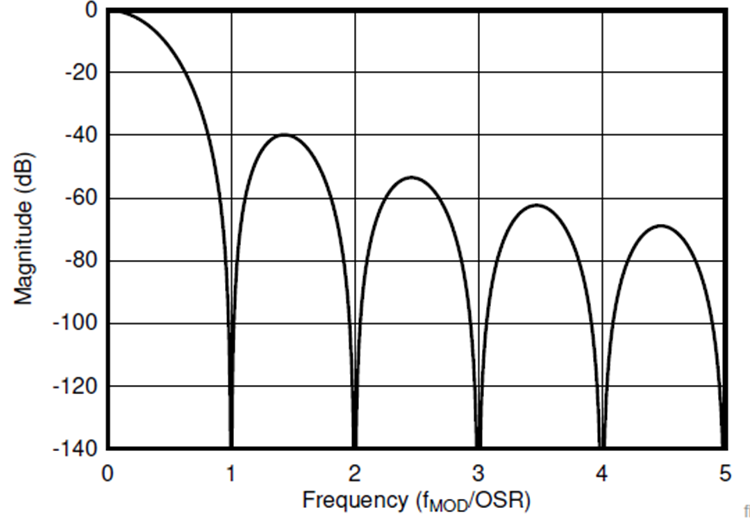TIDUEY0 November 2020
- Description
- Resources
- Features
- Applications
- 5
- 1System Description
- 2System Overview
- 3Hardware, Software, Testing Requirements, and Test Results
- 4Design and Documentation Support
- 5About the Author
2.2.5 Delta-Sigma ADC Clock Frequency Tuning
The digital filter of the delta-sigma ADC can be used effectively when its modulation frequency is 2N times the switching frequency of the buck converter. Figure 2-4 shows ADS131M08 delta-sigma sinc filter frequency response. ADC frequency tuning will make sure of maximum attenuation of switching noise without decreasing the system bandwidth.
 Figure 2-4 Sinc Digital Filter Response.
Figure 2-4 Sinc Digital Filter Response.